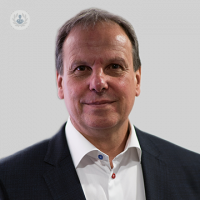What is preservation rhinoplasty?
Written by:Modern rhinoplasty continues to evolve – the operation has gone through many changes from the days of Jacques Joseph, the godfather of modern rhinoplasty. Preservation rhinoplasty consists of remodelling the existing anatomy of your nose, using very few tissue resections and often no grafts, to achieve a more natural appearance of your nose. We learn more about how rhinoplasty techniques are changing for the better in this informative article.

What do people want from a modern rhinoplasty?
Certainly, in the western world, people want to look natural, without looking like they have been operated on. They also want an operation that will give them a stable nose that won’t change significantly over time. Achieving a natural look and stable nose has not really been achieved by the destructive and destabilising operations that have taken place over the last quarter of a century.
Sometimes a person in their mid-20s will have had their nasal support so destabilised after a rhinoplasty that they require a rib graft for reconstruction. We need to move away from this.
Why did older rhinoplasties work out so badly?
At the start of the 20th century, older conservation techniques originally pioneered for a rhinoplasty were forgotten. The importance of the soft tissue and supporting ligaments of the nose and the integrity of the framework of cartilage were not understood or disregarded in favour of excessive reduction to try to create a nose that was smaller and possibly ‘cuter’. Unfortunately, the result of the rhinoplasty was the opposite, with an irregular, asymmetric or dysfunctional nose that did not have a natural look - we still see this result everywhere, especially in the media.
What should I know before choosing a rhinoplasty specialist?
A rhinoplasty requires a highly skilled specialist to perform the operation and although many generalists dabble, you should choose your surgeon carefully and make sure that they are a true expert in their field - do they do operations regularly? Attend rhinoplasty courses to keep up to date? Can they tell you their own revision rates? They should also follow you up and be able to deal with problems that may arise.
It’s important not to be seduced by marketing or offers: make sure to ask established societies, your GP, and trust the word-of-mouth from people who are closest to you or who have had surgery. If you have a colleague or friend in the medical profession, ask them who they would seek out to perform this operation. Reviews and other websites will then help you to build a list of surgeons for you to choose from - and remember, it’s often a bad decision to go for the cheapest option or deal.
Focus groups like the International Rhinoplasty Research Group, a group of dedicated rhinoplasty surgeons who have embraced conservative rhinoplasty (e.g Piezo Diamond rhinoplasty) can help, as can specialist associations like the European Academy of Facial Plastic Surgery and The Rhinoplasty Society of Europe.
These latest techniques keep the patient’s natural bridge but find ways to convert a hump into a straight or concave nose and reshape cartilage to create a pretty nose without compromising function or support. In this way, the 'pinched' operated look is avoided and patients achieve a natural look that isn’t disfigured or dysfunctional.
What is the philosophy at Rhinoplasty London?
Mr Charles East and Miss Lydia Badia at Rhinoplasty London, together with their dedicated staff, are always available to offer their specialist advice for each individual case. Their care and attention are second to none and as pioneers, innovators and specialist surgeons, they will offer the best rhinoplasty advice for your first rhinoplasty procedure.
At Rhinoplasty London, Mr East receives many patients that have had a rhinoplasty previously with unfavourable results. The skill base at the clinic allows Mr East and his colleagues to rescue patients both aesthetically and functionally after they have had a bad primary rhinoplasty. Secondary rhinoplasties are more complex and technically challenging, but in many cases, fantastic results are achieved and patients can go home happy.
Mr East says that “our philosophy is to continue to practice and educate the philosophy of preservation rhinoplasty with the goal that in time the outcomes will be better with fewer patients requiring secondary or tertiary surgery.”


